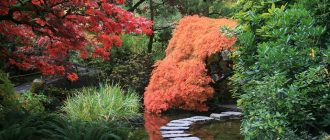Find out about the ancient tradition of Japanese tea gardens and how they have evolved to become a contemporary form of art.
As the name suggests a Japanese tea garden is a place ideal to hold tea ceremonies. The nature of these gardens is such that they have an outer and an inner portion. Although there are a number of variations when it comes to creating Japanese tea gardens this is by far the most popular one.
A stone path leads the way from the gate of the outer garden towards the inner garden. It is in here where you will find an informal arrangement of plantings. Then there is another gate through which the guests are required to pass. A water basin that is used during ceremonies is situated near this gate.
Another stone path leads the way from the second gate towards the inner garden. This region is deliberately not flowered so as to prevent the guests from being distracted along the way. At the end of the path is a small structure where the actual tea ceremony is held. A Japanese tea garden can nicely fit into an average sized yard or it can be installed as part of a large Japanese garden.
Japanese Garden Benches
The slow progression of the guests on the stone path leads them toward the traditional Japanese garden bench. The garden bench is known as machiai in local lingo. Japanese tea gardens are taken as a place to relax and spend some time with friends and family while enjoying the beautiful ambiance of the surroundings.
When the time is right the guests are summoned to the tea house by the host where they get together to appreciate the garden setting and chatter over other issues including the artwork and accessories of the Japanese tea garden.
The tea ceremony scene has been a part of Japanese culture for many years. Hence it is common to find people hosting tea ceremonies in their homes. Not all people can afford to go to tea houses and much rather prefer holding a ceremony in their own homes instead.
Japanese Tea Houses
The Japanese have made use of the concept of tea gardens in order to attract tourists. You will be able to find a Japanese tea garden incorporated in a park where tea ceremonies can be held. Similarly tea gardens are frequently seen alongside restaurants and as well as in the homes of people.
Tea garden landscaping is taken as an art form and one can get very creative with the medium. This is why there are many professional garden landscape artists whose services can be hired when looking to design a Japanese tea garden.
The tea ceremony tradition that dates back to the 15th century has the dharma of Zen Buddhism as its main influence. Over the years however the concept has evolved and tea ceremonies are now even held in high schools.
The major shift has been that whereas enjoying the privileges of Japanese tea gardens was only something that the rich could do in the old days, it can be done by anyone these days. With the concept gaining immense commercial popularity over the years access to a tea garden has become easier and cheaper for the general public.




